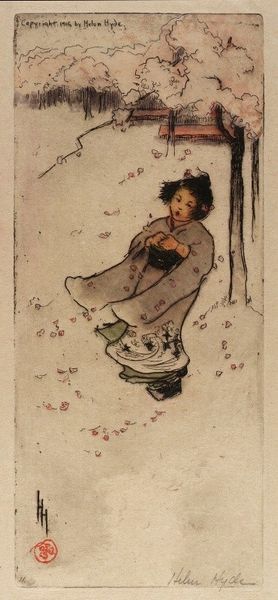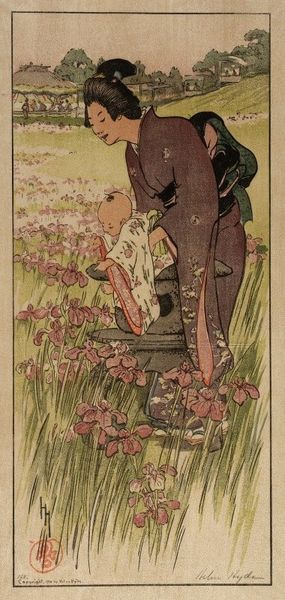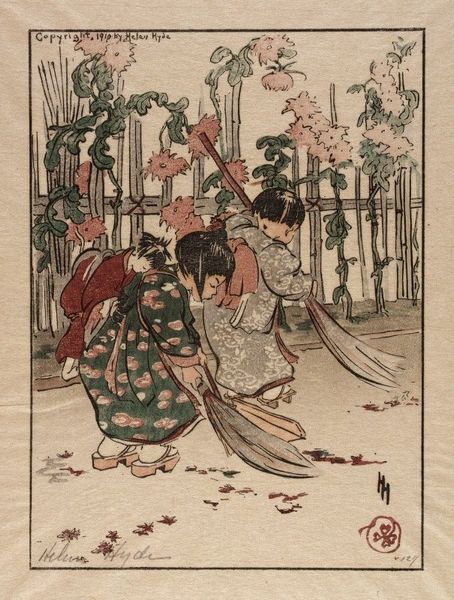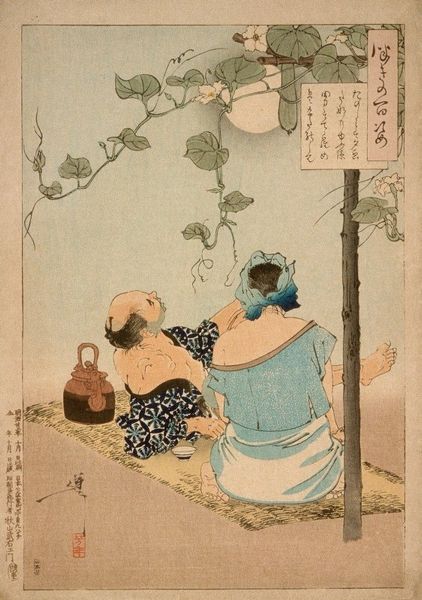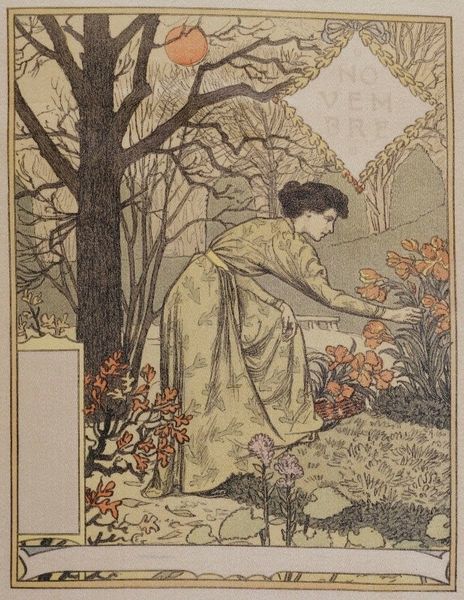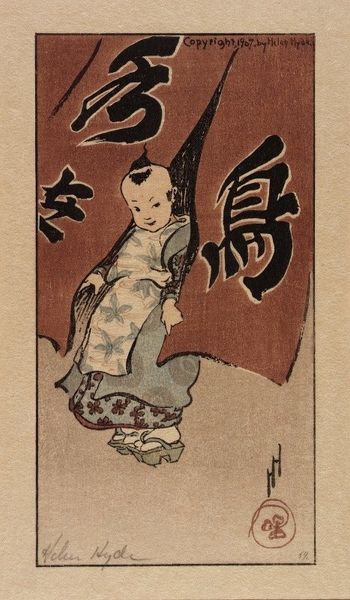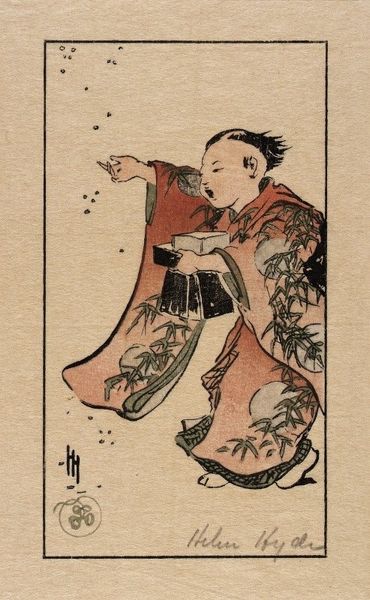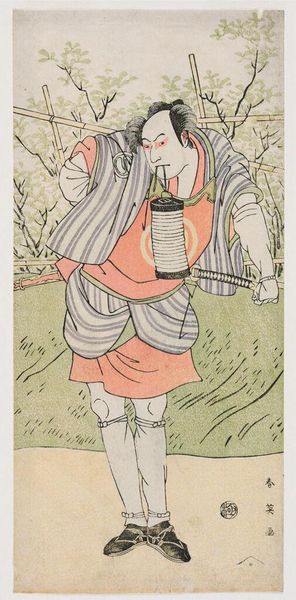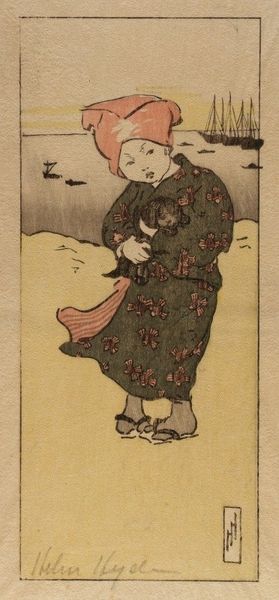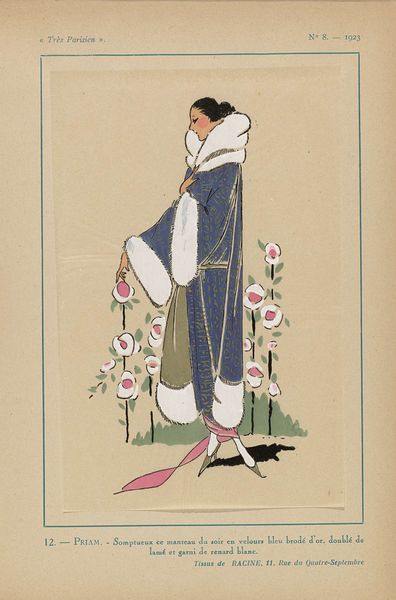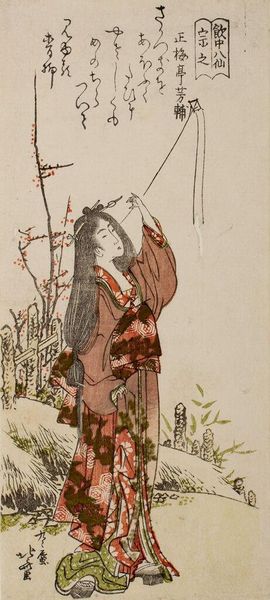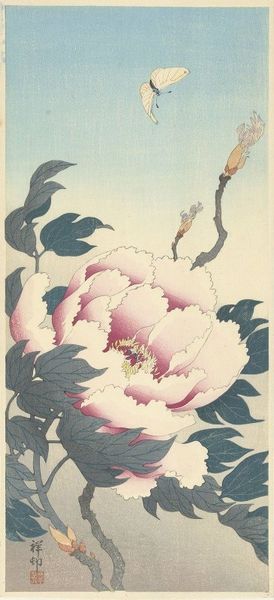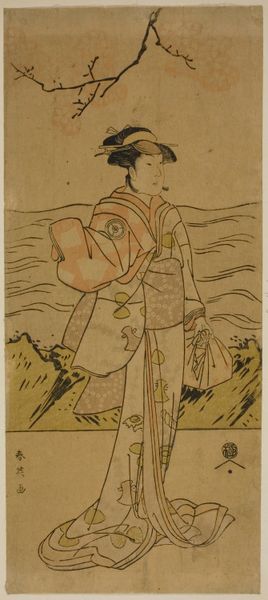
Copyright: Public Domain: Artvee
Curator: This is "Confidences," a print crafted by Helen Hyde in 1906, showcasing her embrace of Japanese printmaking techniques combined with Western sensibilities. The work, executed with ink on paper, reflects a moment of quiet contemplation. Editor: My immediate reaction is the sense of innocence and intimacy it conveys. The young girl seems completely absorbed in the presence of these roses. Curator: Indeed. Hyde lived and worked in Japan for an extended period, where she learned the woodblock printing tradition. You can really see it here, adapted through her lens as an American woman. Notice the simple lines, the flat planes of color—classic Ukiyo-e characteristics—juxtaposed with an Impressionistic feel to the roses themselves. It's a fascinating cultural exchange. Editor: And look at the positioning. The girl isn't presented as an idealized figure, elevated or overtly symbolic. She’s eye-level with the flowers, engaging in a conversation with nature. The composition and her proximity suggest a focus on internal experience, a quiet moment of becoming. Curator: Absolutely. Her pieces resonated with many at the turn of the century, who were fascinated by exotic lands. But beyond the surface appeal, her art speaks to the universal experience of childhood and connection. Hyde challenges prevailing social constructs by decentering adult narratives. Editor: I see the print as a form of subtle rebellion. By placing this young girl at the center of her world, among her own cultivated flora, the artist crafts a powerful visual statement. And notice how each bloom almost has a distinct personality. It encourages us to re-evaluate these small, ordinary experiences we so easily dismiss. Curator: I agree. Hyde’s blend of artistic styles, Eastern and Western, reveals the constructed nature of identity itself. It also reveals much about the role that women artists of this time played in both observing and documenting shifts in gender and cultural dynamics. Editor: For me, "Confidences" captures that fleeting stage in life where the lines between reality and imagination blur. This quiet contemplation could have revolutionary implications, showing the powerful role art can play in allowing space for that liminality. Curator: It's definitely a gem. The way it holds space for viewers to bring their own interpretations and emotions... It makes this artwork really timeless, beyond its specific time. Editor: Agreed. These dialogues with nature and our internal lives remain enduringly important, I believe. Thank you for highlighting these nuances with me.
Comments
No comments
Be the first to comment and join the conversation on the ultimate creative platform.
